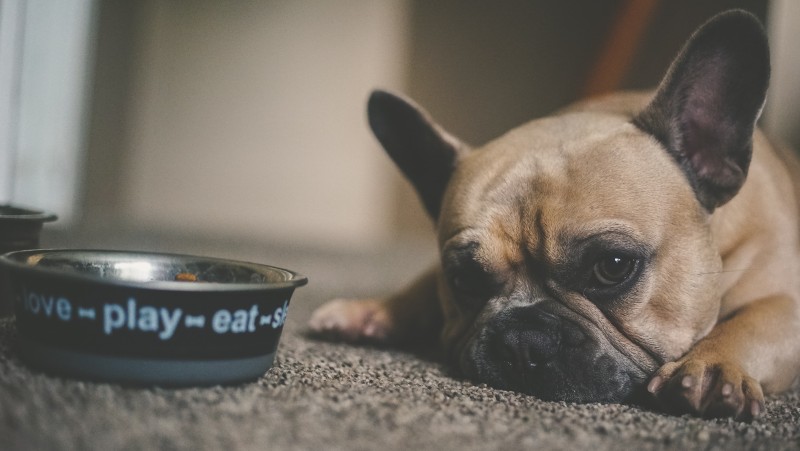Free feeding is simply where we allow food to be accessible to our dogs at all times, and they can choose when they want to eat, and how much at any time. Either the full day’s ration is placed in a bowl at the start of the day, the bowl is regularly topped up, or owners can use a free-feeding machine that ensures there is a continual ‘flow’ of food. This, by the way, is a concept that will be seen as completely alien to anyone who has ever owned a Beagle!
The single most common reason given by people who ‘free feed’ their dogs is convenience. It’s just one less thing to worry about. However, free feeding does have its problems, and if you have a multi-dog household you might be encouraging things that you will need to worry about.
POOP SCHEDULE
If you know when your dog has had a meal, you’ll know when he needs to poop. And as such, you can make sure he has access to go outside at the right times. This is important when dealing with puppies and young dogs you may be trying to housetrain. Routines are very important to dogs, as anyone that has been five minutes late when feeding their dogs will attest.
APPETITE
One of the first signs that your dog may be feeling unwell is their appetite will slow. If your dog generally grazes through the day, it may become harder to notice. If your dog is on a reasonably fixed schedule, and usually happily eats his food, you’ll notice immediately if he walks away from it. You can then investigate further, keep an eye on things and if you do end up going to the vet for a checkup, you’ll be able to tell them when your dog last ate anything.
IT’S THE TROPICS!
Ants, geckos, rats ‒ you name it, we got it. And if there is a constant supply of food on the go, you can bet your bottom dollar any number of bugs and rodents are going to be in like a shot to try and get it.
MULTI-DOG HOUSEHOLDS
Free feeding multiple dogs in a household can bring additional challenges, not least that it makes it nigh on impossible to ascertain which dogs have eaten what and how much. Equally, if one dog is more assertive or dominant than the others, they may be eating ‘more’ or even intimidating the others to leave the food altogether.
A lot of the time these signals go unnoticed and the only way you’ll know is if the dogs’ weights are going in different directions. But that can take time to notice. Also, if one of the dogs is starting to resource guard the food, then the longer this goes on the harder it becomes to re-condition.
Again, if all dogs are on a set schedule and are all fed together, then you’ll easily be able to determine who has eaten what and make sure everyone gets their own meal. We can also ensure that if one dog finishes before another, he doesn’t go harassing the other dogs for their food too. I’d argue this is generally the important point on its own, but it has even more prevalence if some of the dogs are on different foods, or medications.
TRAINING
Food is a primary resource for the majority (not all) dogs. As such, food is a very useful motivational tool that we can use when working and training our dogs. Whether it’s a reliable recall or just some basic skills, if there’s food involved, we can get our dogs to do most things. The real trick is learning how and when to use the food, and when to fade it out.
For more information on canine training and behavioural issues, please contact us on 091 654 1960, email info@k9pointacademy.com, or visit www.k9pointacademy.com. CPA is accredited with the Certification Council for Professional Dog Trainers (CCPDT), as an American Kennel Club (AKC) Evaluator and a Professional Member of the IACP.








